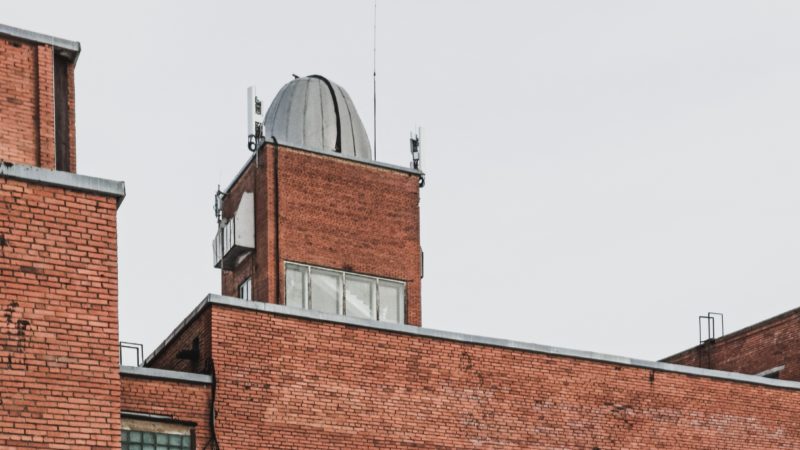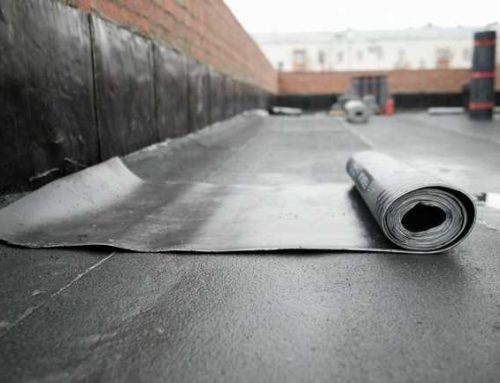Rising in popularity after the Second World War, flat roofs can be found on many buildings in the UK, especially homes with extensions. They’re the most popular type of roofing for commercial buildings and large structures. If you’re considering using flat roofing for your next building project, you may be wondering about what flat roofing is and what its benefits are.
In this blog, we answer these questions, consider the pros and cons of using flat roofing and discuss the installation services available.
What is flat roofing?
Flat roofs are exactly what they say on the tin: a roof that is completely or almost flat. There are many reasons why a builder or homeowner may choose to install a flat roof, but the main reason is that they are cheaper than traditional pitched roofs. They can also be easier to install and maintain than traditional pitched roofs, which makes them an attractive option for small outbuildings, garages or extensions.
However, what many people don’t realise is that flat roofs have to be installed at a slight angle to allow rainwater to run off the lower side of the roof. To ensure the roof lasts for many years, regular maintenance checks are also essential, ensuring that water does not pool on top of the roof. A slight slope and specialist drainage systems for flat roofs usually ensure pooling doesn’t happen, however.
Traditionally, flat roofs are made from EPDM rubber or single-ply TPO or PVC. Polyurethane liquid systems are also becoming more popular today due to their ease of installation.
Types of flat roofing
Some of the main types of flat roofing include:
Built-up roofing
Built-up roofs are made up of layers of material that are installed one on top of the other. This type of roofing consists of several bottom layers of insulation board and then more layers of asphalt or tar which are alternated with roofing felt. The top layer is made from gravel, which allows water to drain off quickly when it rains. This type of flat roofing costs significantly less than other types because it doesn’t require additional sealing materials.
Rubber membrane
Rubber membrane roofs are made out of flexible sheets that contain an elastomeric polymer (natural rubber) – EPDM is one example. This elastomeric synthetic rubber product creates a waterproof seal between two layers of EPDM sheeting.
Modified bitumen
Modified bitumen flat roofing is another popular choice for UK homeowners because it is lightweight. It’s very easy to install (the installer uses a torch to heat up the material and melt it to form a base layer) and can also be applied as a single layer.
The pros of flat roofing
Some of the pros of flat roofing include:
More affordable
Flat roofs are generally made from cheaper materials, which means that the cost of installation is significantly lower than other forms of roofing. The labour costs associated with flat roofing are also much lower than other types of roofing as they require less specialised equipment.
Easy installation
While the installer is still working at height, they don’t have to contend with an incline, which means flat roofs are usually easier and faster to install. They also have the added benefit of being easier to repair than other types of roofs.
More versatile
Flat roofs are more versatile than pitched roofs. Since they don’t have any steep angles, they can be used in a variety of locations without needing to adjust their shape or height. Flat roofs are also more accessible, making it easier to inspect them for damage and leaks.
You can even use a flat rooftop as an extra deck or balcony if you had a lower-level extension built onto your home. Flat roofs are also great locations for solar panels.
More energy-efficient
Flat roofs are more energy efficient than sloping roofs because the absence of gaps means less air can penetrate the building. This reduces the amount of heat loss during winter and helps to keep the temperature inside more consistent throughout the year.
The cons of flat roofing
Some of the cons of flat roofing include:
Less aesthetically pleasing for residential properties
Flat roofs are not as common in residential properties today due to their appearance. Flat roofs are typically only available in neutral industrial colours and are more focused on function than style.
Possibility of drainage issues
Flat roofs are more susceptible to water damage, so they need to be monitored for standing water, debris and blocked drainage. Flat roofs also have a higher possibility of drainage issues, which can lead to mould and mildew growth.
Less durability
Flat roofs are often less durable than other styles of roofing, and you can expect them to only last 10 – 15 years, which is a significantly shorter lifespan than other types of roofs. If longevity is important to you, this will be something to consider when making your decision on what type of roofing material to install.
Less stability
Flat roofs tend to be less stable than sloped roofs because they lack the same drainage capacity. In addition, because flat roofs don’t slope, they usually have seams that run across them. These seams can lead to leaks along their edges if they aren’t installed or maintained properly.
At Cooper & Williams, we are roofing specialists in flat roofing. Our installation services include:
- Supply and fit of EPDM rubber roofing, which is a durable synthetic rubber roofing product used on low-slope properties worldwide.
- Torch-applied high-performance felts, which create insulation and protection from the elements.
- Liquid roofing, which is a liquid membrane that can be applied directly on new or existing roofs without needing any additional insulation.
- uPVC facia replacement, which is used to replace damaged or broken facias.
- Storm damage and emergency repair.
For more information on our flat roofing services, get in touch with us today.


